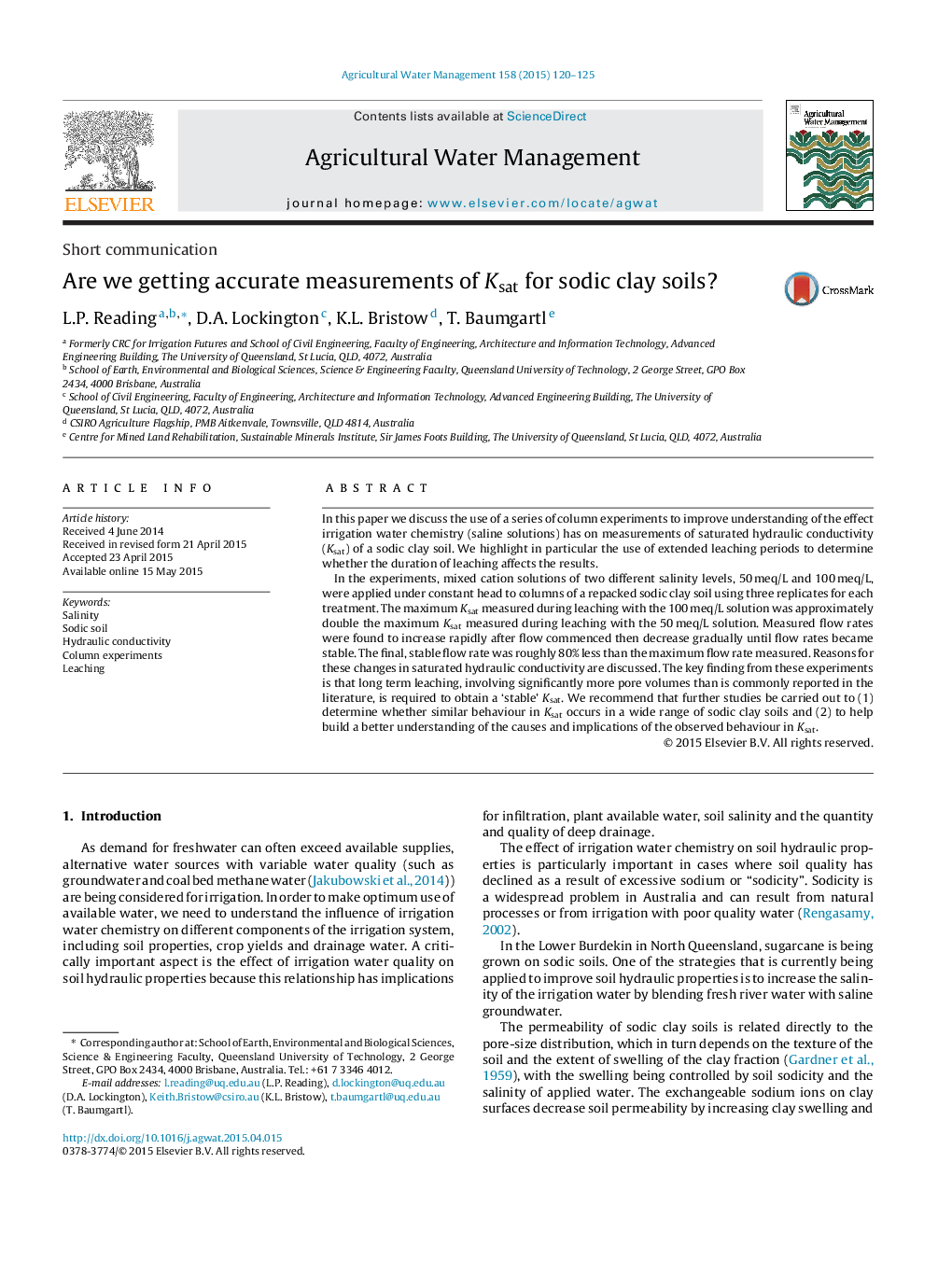| Article ID | Journal | Published Year | Pages | File Type |
|---|---|---|---|---|
| 4478427 | Agricultural Water Management | 2015 | 6 Pages |
•We investigated the impact of irrigation water salinity on hydraulic conductivity.•Saturated hydraulic conductivity (Ksat) increased sharply then gradually declined.•It took hundreds of pore volumes of leaching to achieve a stable measurement.•Ceasing measurements too early could result in a tenfold overestimation Ksat.•The results have implications for management of sodic soils under irrigation.
In this paper we discuss the use of a series of column experiments to improve understanding of the effect irrigation water chemistry (saline solutions) has on measurements of saturated hydraulic conductivity (Ksat) of a sodic clay soil. We highlight in particular the use of extended leaching periods to determine whether the duration of leaching affects the results.In the experiments, mixed cation solutions of two different salinity levels, 50 meq/L and 100 meq/L, were applied under constant head to columns of a repacked sodic clay soil using three replicates for each treatment. The maximum Ksat measured during leaching with the 100 meq/L solution was approximately double the maximum Ksat measured during leaching with the 50 meq/L solution. Measured flow rates were found to increase rapidly after flow commenced then decrease gradually until flow rates became stable. The final, stable flow rate was roughly 80% less than the maximum flow rate measured. Reasons for these changes in saturated hydraulic conductivity are discussed. The key finding from these experiments is that long term leaching, involving significantly more pore volumes than is commonly reported in the literature, is required to obtain a ‘stable’ Ksat. We recommend that further studies be carried out to (1) determine whether similar behaviour in Ksat occurs in a wide range of sodic clay soils and (2) to help build a better understanding of the causes and implications of the observed behaviour in Ksat.
